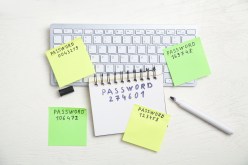The Ultimate Guide to Understanding Key Codes by VIN Number
In the automotive industry, obtaining the correct key code is crucial for various reasons, from replacing a lost key to cutting a new one. One common method of finding the key code is by using the Vehicle Identification Number (VIN). The VIN is a unique identifier for each vehicle and can provide valuable information about its history and specifications. In this guide, we will explore key codes, how they are derived from VIN numbers, and their importance in the automotive world.
What are Key Codes?
Key codes are alphanumeric sequences that serve as a blueprint for cutting a specific key. They determine the shape and size of the cuts on the key blade, ensuring it aligns perfectly with the tumblers inside the lock cylinder. Key codes are typically found on original keys or in vehicle documentation such as owner’s manuals or service records.
How are Key Codes Obtained from VIN Numbers?
Modern vehicles have complex locking systems with advanced security features. To obtain a key code from a VIN number, automotive locksmiths and dealerships use specialized software that decodes the VIN to extract relevant information about the vehicle’s locks and keys.
The process involves inputting the VIN into an electronic database or software program specifically designed for decoding vehicle information. This software then retrieves data such as key codes, immobilizer codes, or other security-related information associated with that particular vehicle.
The Importance of Key Codes
Having access to accurate key codes can save time and money when it comes to replacing lost or damaged keys. With a valid key code, locksmiths can cut new keys without having to dismantle locks or resorting to other time-consuming methods.
Key codes also play a vital role in preventing unauthorized duplication of keys. Automotive manufacturers keep detailed records of which vehicles have been assigned specific key codes. This helps ensure that only authorized individuals can obtain duplicate keys through licensed dealerships or locksmiths.
Additionally, key codes are essential for rekeying locks. If a vehicle owner wants to change the locks due to security concerns or after purchasing a used car, having the correct key code allows locksmiths to create new keys that match the existing lock cylinders.
Limitations and Considerations
While key codes obtained from VIN numbers are generally reliable, there are some limitations and considerations to keep in mind. Firstly, not all vehicles have key codes listed in their documentation or on the original keys. This can be particularly true for older models or vehicles with aftermarket locks.
Furthermore, some vehicles may have multiple key codes associated with different locks or systems. For example, a car might have separate codes for the ignition switch, doors, trunk, and glove compartment.
It’s also important to note that not all locksmiths have access to the same databases or software programs required to decode VIN numbers and retrieve key codes. Therefore, it’s crucial to find a reputable locksmith or dealership with the necessary tools and expertise.
Conclusion
Understanding key codes by VIN number is essential for anyone involved in automotive lock and key services. By utilizing specialized software and databases, locksmiths can quickly retrieve accurate key codes that facilitate efficient key cutting and lock rekeying processes. Having access to these codes ensures proper security measures while providing convenience for vehicle owners when faced with lost keys or other similar situations.
This text was generated using a large language model, and select text has been reviewed and moderated for purposes such as readability.





